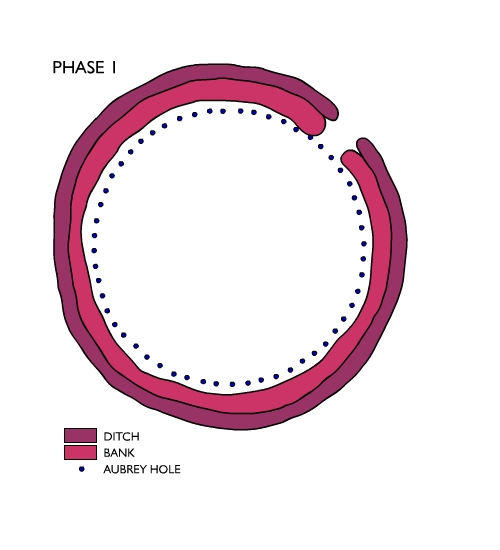 |
||
|
Phase 1 Construction on Stonehenge probably began around 2800 BCE. Around Stonehenge, this was a time of small Neolithic settlements set in grassland and woodland environments. These later Neolithic people relied on agriculture supplemented with wild food resources. Initial construction at Stonehenge began with the construction of a ditch and bank enclosure, radiocarbon dated to 2800 BCE. Environmental evidence from excavations indicates that this enclosure was built in a cleared area that was soon overgrown with vegetation. Approximately 600 years later (ca. 2200 BCE), a series of 56 pits, known as the Aubrey Holes, were dug immediately adjacent to the bank of the enclosure. Excavations found no evidence of stone or timber footings that would indicate a standing monument. Instead, traces of cremated human bone were found in their upper levels, suggesting that at this time, Stonehenge was used as an enclosed Neolithic cemetery. |
||